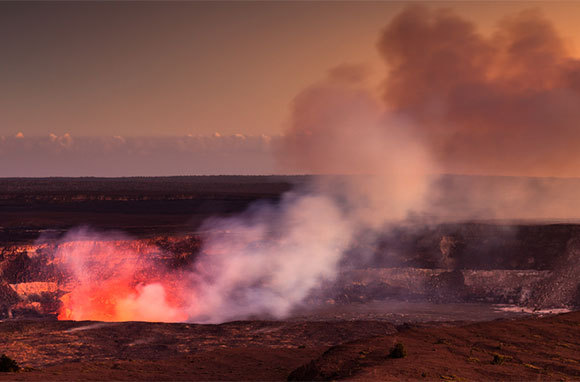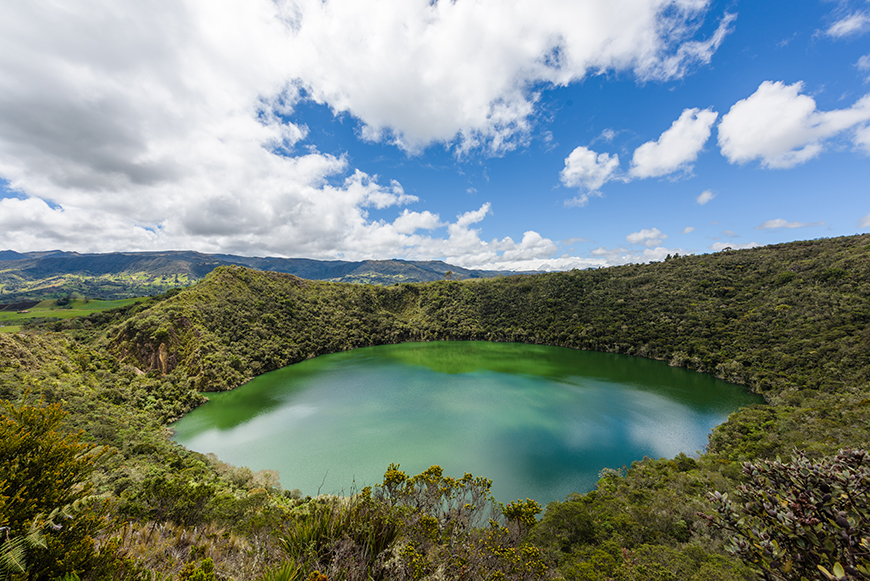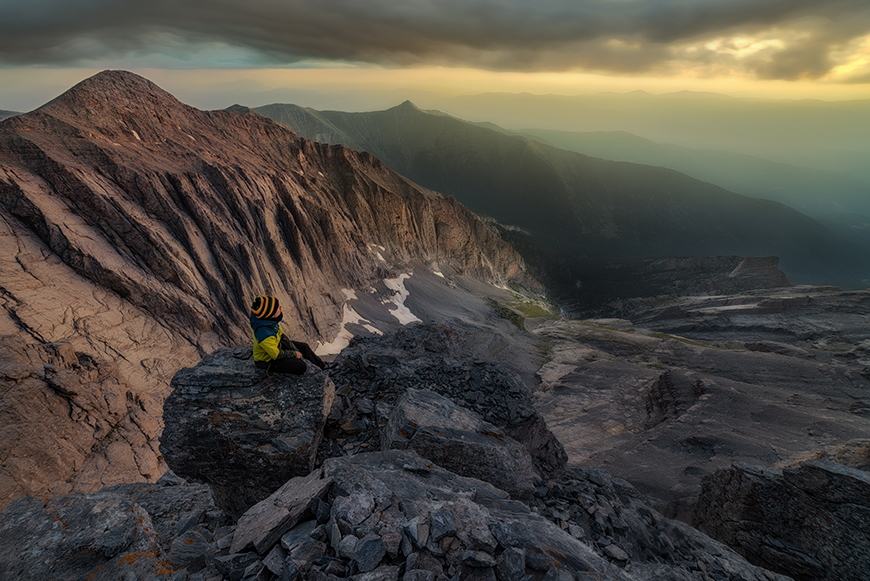They say there’s a grain of truth in every tale, so we went looking for it. As it turns out, there could have been a Camelot with Round Table knights. A lost city of gold. A Trojan War among Greek gods.
We’re taking you to 10 of the world’s must-see mythical places, some of which are actual archaeological sites, so you can experience the intrigue and see why scholars haven’t ruled out the possibility of their existence.
The Odyssey’s Cyclops Riviera, Sicily, Italy

The Myth: An ancient Greek poem attributed to Homer, The Odyssey traces Odysseus (or Ulysses, in the Roman version of the myth) and his epic journey home after the Trojan War. A fantastic chain of events has the homesick hero battling a fierce one-eyed monster Cyclops and a six-headed sea monster, Scylla.
The Place: Along the real-life Cyclops Riviera (who knew?) that stretches from Catania to Acireale along Sicily’s gorgeous eastern coast, you’ll find seaside towns, citrus orchards, and looming Mount Etna, home of Cyclops and Vulcan, the god of fire. Scilla, the nearby Calabria fishing village, is named after the sea monster that devoured Odysseus’ companions.
Why Go: To see Cyclops Rocks, the volcanic cliffs offshore that, as legend has it, Cyclops threw at Odysseus. Ride a cable car to the top of Mount Etna, then take a special terrain vehicle to the crater area at this active volcano. Sicily is also home to the Valley of Temples, ruins of temples built for Zeus, Hercules, and other gods.
Site of the Trojan War, Troy, Turkey

The Myth: Homer’s other epic Greek poem, The Iliad, recounts the brutal 10-year Trojan War between the city of Troy and the Achaeans (ancient Greeks) that sparked when the prince of Troy kidnapped Helen, the daughter of Zeus. Thanks to Odysseus’ plan to use the fabled wooden Trojan horse, he and the Achaeans penetrated the massive walls of Troy and besieged the city.
The Place: For centuries, scholars were convinced the Trojan War was entirely a Greek myth. But in the late 1800s, archaeologist Heinrich Schliemann uncovered what historians believe are the remnants of Troy near Turkey’s northwest coast. Today the 4,000-year-old ruins are a UNESCO World Heritage site.
Why Go: To wander the temples and ruins once ravaged by slaughter and widespread fire. There’s also a reconstruction of the Trojan horse at the archeological site (although, according to recent translational claims, it may not have been a horse at all). If you want to see the prop horse from the 2004 film Troy that starred a buff Brad Pitt, visit the boardwalk in nearby Canakkale.
Shangri-La, Himalayan Mountains, Tibet

The Myth: The name “Shangri-La” first appeared in James Hilton’s 1933 novel Lost Horizon as a fictional utopia high in the Tibetan Himalayas, where life is enlightened and days are lived in peace and wonder. So influential was the myth that the term now appears in the dictionary as a synonym for a remote paradise.
The Place: Several communities deep within the snow-capped Himalayas have since claimed to be the novel’s inspiration, and the China-Tibet border town of Zhondian even renamed itself Shangri-La in 2001. But any definite location of any actual Shangri-La, as with Buddhism’s enlightened Himalayan kingdom of Shambhala, is pure speculation.
Why Go: To marvel at the peace and wonder you’ll find in early morning hours at Zhondian’s Songzanlin Monastery. In the village are teahouses and Buddhist prayer flags flapping in the high-altitude breeze. Area hiking trails will lead you through paradise’s Tiger Leaping Gorge and Shangri-La Canyon.
King Arthur’s Camelot, Cornwall, England

The Myth: As the legend goes, King Arthur was a British leader who led his Knights of the Round Table against Saxon invaders in the 5th or 6th century CE. He took the throne at Camelot by pulling a magical sword, Excalibur, from a stone, a feat only the true king of Britain could accomplish.
The Place: British Library manuscripts suggest Arthur is based on an actual person who lived in Shropshire. That county’s Wroxeter archaeological dig site, with remains of an ancient city and castle, is believed to be King Arthur’s Camelot.
Why Go: To check out the dig site and its museum, which displays artifacts from the excavation. Explore possible Sword in the Stone evidence at Mitchell’s Fold stone circle. You can visit Arthur’s reputed birthplace in Tintagel near clifftop castle ruins and Merlin’s cave. Mecca for mystics, the town of Glastonbury now sits on what is considered the king’s final resting place, the Isle of Avalon.
Loch Ness, Highlands, Scotland

The Myth: In Scotland’s most famous modern-day myth, the Loch Ness Monster is said to inhabit the 23-mile-long and 600-foot-deep Loch Ness. A London doctor first captured “Nessie” on film in 1934. Dozens of reported sightings and hoaxes have cropped up ever since, and the mystery remains unsolved.
The Place: At this glacier-carved lake, the peaty-brown water never freezes, and in calm, warm conditions some say it’s prone to mirage. Several monster-related attractions and souvenir shops satisfy the droves of tourists that visit each year.
Why Go: For a chance to catch a glimpse of the elusive Nessie. Take a boat cruise tour with a guide who will recount stories of sightings and take you past Urquhart Castle, a medieval fortress. In Drumnadrochit, the Loch Ness Centre & Exhibition presents research and eyewitness accounts of the monster. See an impressive series of canal locks at the south end of Loch Ness.
Pele’s Hawaii, Hawaii Volcanoes National Park, Hilo, Hawaii

The Myth: Not just a legend told at luaus, Pele, the goddess of the volcano, is a very real part of the beliefs held by Hawaiian natives. Every fiery eruption here is said to be her molten body moving across the land. According to legend, anyone who removes a piece of rock from Hawaii Volcanoes National Park suffers Pele’s wrath with streaks of bad luck, often prompting the offender to abandon the rock or return it.
The Place: Locals say Pele’s home is Halema’uma’u Crater at the national park’s summit caldera of Kilauea. In this sacred place, Hawaiians still practice the ancient tradition of giving Pele offerings—chants, dances, or leis made of native materials.
Why Go: To see the caldera, walk through a lava tube, or watch glowing lava spew and ooze after dark. Along the 11-mile Crater Rim Drive, the Jaggar Museum overlook offers the best and closest view of Halema’uma’u when it erupts.
El Dorado, Bogota, Colombia

The Myth: The mention of El Dorado conjures up images of a fabled city rich in treasures somewhere in the thick South American jungle. But the myth is actually linked to sunken treasure in a Colombian lake. It is said that a Muisca tribal chief, in worshipping the goddess of water, would cover himself in gold dust, load a raft with his priests and the village’s gold treasures, then dive into the lake with the offerings.
The Place: On an ecological reserve outside of Bogota, the green-hued Lake Guatavita is the sacred El Dorado ceremonial site. Since the days of the Spaniards, several expeditions have attempted to loot the gold, turning up small amounts of everything from jewelry to ornaments and armor.
Why Go: To hike the trails around the lake and imagine what still lies at the muddy bottom. At the Museo del Oro (Gold Museum) in Bogota, check out the golden Muisca raft, a piece that dates to somewhere between 1200 and 1500 BCE.
Xanadu, Inner Mongolia

The Myth: Some of us hear “Xanadu” and immediately flash back to the ’80s musical with Olivia Newton-John on roller skates. Roller discos aside, the definition of Xanadu is an idyllic place of great beauty, luxury, and contentment. And that’s what English poet Samuel Taylor Coleridge describes when he references Xanadu in his famous poem “Kubla Khan.”
The Place: As Coleridge’s poem notes, Xanadu (or Shangdu) was the summer capital of Kublai Khan’s Yuan Dynasty after 1264. It was located in what is now Inner Mongolia, some 220 miles north of Beijing, but was abandoned in 1430. Xanadu was recently added to the list of World Heritage sites and features the remains of the city’s temples, palaces, and tombs, and a canal.
Why Go: To experience an idyllic place set among mountains and a river and planned according to traditional Chinese feng shui. At the Xanadu archaeological site, you can see how the city was laid out to accommodate Mongolian tribal meetings and hunting.
Mount Olympus, Greece

The Myth: The setting for numerous Greek myths, Mount Olympus is known as the home of the 12 ancient gods (Zeus, Hera, Apollo, Athena, and other big names). According to Homer, the gods live in the mountain’s mysterious folds. Pantheon (now called Mytikas) is their meeting place, where Zeus hears heated discussions and unleashes his thunderous wrath.
The Place: From ancient days, fog and frequent storms have enshrouded this mountain in mystery, inspiring the awe and admiration of onlookers at its base. Now a protected national park, Olympus is an important sanctuary for birds and rare plants and animals.
Why Go: To experience the wrath of Zeus as you watch a tempestuous storm roll in. Well-marked trails traverse Mount Olympus, and they’re relatively easy to climb. You can follow one of several mountaineering clubs, stopping at refuges along the way.
Robin Hood’s Sherwood Forest, Nottinghamshire, England

The Myth: More than 600 years’ worth of ballads, plays, novels, and movies have spun the tale of this fearless, noble outlaw. Accounts vary, but most modern versions peg Robin Hood as a highly skilled archer who steals from the rich and gives to the poor, leading a merry gang against the injustices of the Sheriff of Nottingham.
The Place: Once a royal hunting forest, Sherwood Forest is now a 450-acre national nature reserve with visitor-center exhibits and trails leading past some of Europe’s oldest trees. See what’s believed to be Robin Hood’s hideout: the hollow trunk of Major Oak, a giant twisted tree with a girth of 36 feet that’s estimated at 800 years old.
Why Go: For the Robin Hood Festival in July, where you’ll find characters in medieval costume as well as archery and jousting demonstrations. In Nottingham you can take a guided walking tour to learn about key sites, including Robin’s grave.
Editor’s note: This story was originally published in 2013. It has been updated to reflect the most current information.
You Might Also Like:
• The 7 Best Travel Dresses for Europe• The 8 Best Ticket Websites for Booking Day Tours and Travel Activities
• The Best Travel Leggings of 2023
• Europe Travel Scams Every Tourist Needs to Know
• Panama Travel Guide: What to Do in Panama
We hand-pick everything we recommend and select items through testing and reviews. Some products are sent to us free of charge with no incentive to offer a favorable review. We offer our unbiased opinions and do not accept compensation to review products. All items are in stock and prices are accurate at the time of publication. If you buy something through our links, we may earn a commission.
Related
Top Fares From
Today's Top Travel Deals
Brought to you by ShermansTravel
France: 8-Night Paris, Avignon & Nice...
Infinity Worldwide Vacations
 vacation
$2880+
vacation
$2880+
Poconos: 3 Nts in Garden of...
ResortsAndLodges.com
 hotel
$305+
hotel
$305+
7-Nt Canada & New England Cruise,...
Princess Cruises
 cruise
$839+
cruise
$839+




